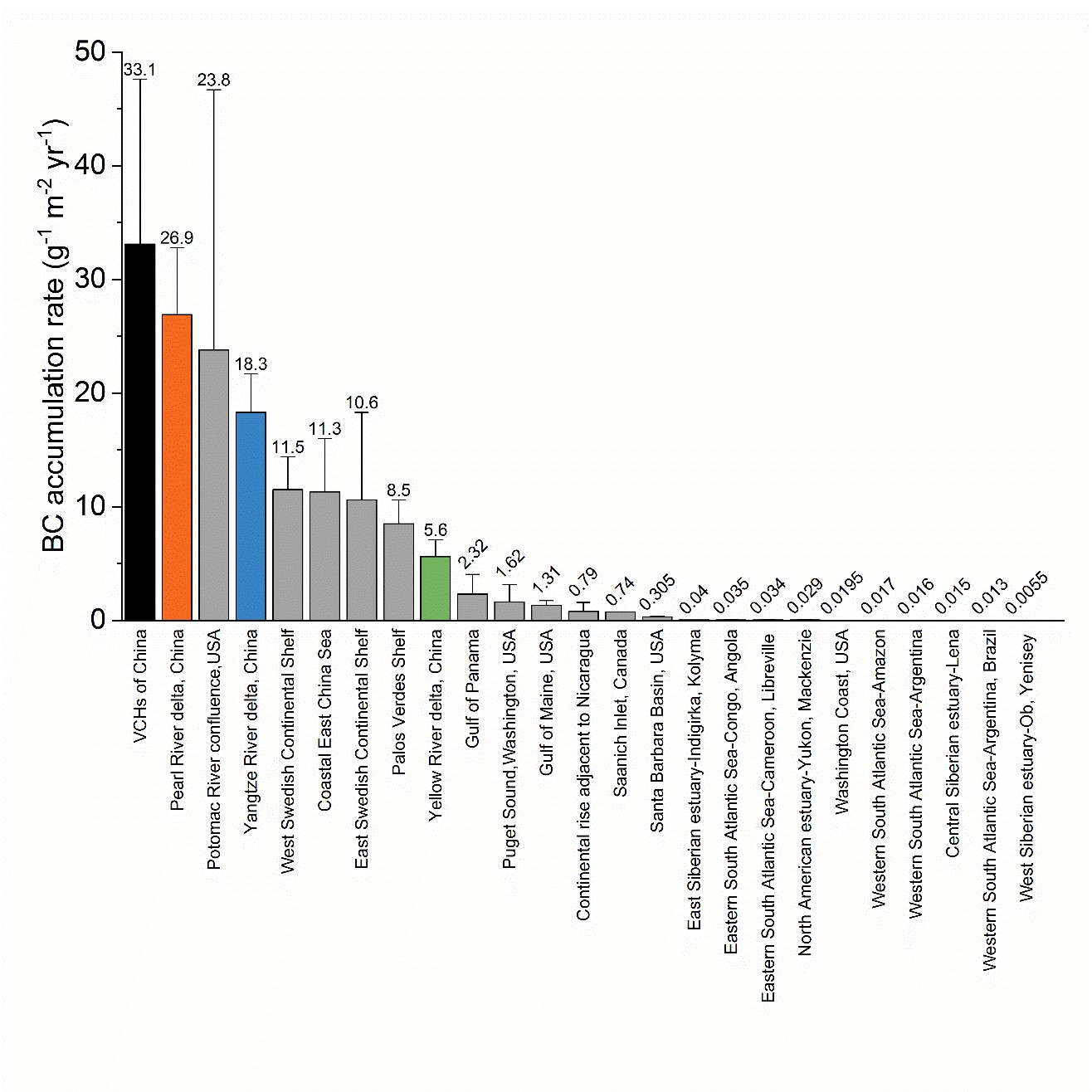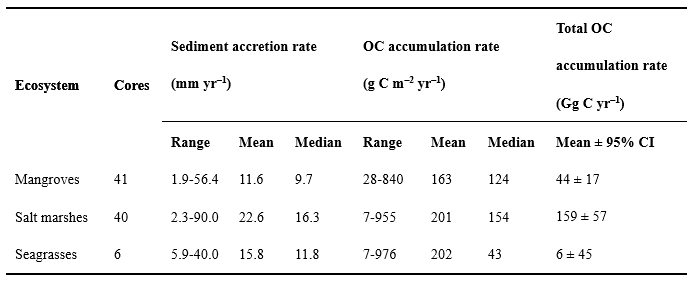| Research |
| Location:Home > Research > Research Progress |
| Stocks of soil organic and black carbon from Chinese vegetated coastal habitats |
Global vegetated coastal habitats (VCHs) represent a large sink for organic carbon (OC) stored within their soils. The sparsity and regional bias of studies on soil OC stocks from Chinese VCHs have limited the reliable estimation of their capacity as regional and global OC sinks. We use field and published data from 262 sampled soil cores and 181 surface soils to report estimates of soil OC stocks, burial rates and losses of VCHs in China (Fig. 1) (Fu et al., 2021). We find that Chinese mangrove, salt marsh and seagrass habitats have relatively low OC stocks, storing 6.3 ± 0.6, 7.5 ± 0.6, and 1.6 ± 0.6 Tg C (±95% confidence interval) in the top meter of the soil profile with burial rates of 44 ± 17, 159 ± 57, and 6 ± 45 Gg C year–1, respectively (Table 1). The variability in the soil OC stocks is linked to biogeographic factors but is mostly impacted by sedimentary processes and anthropic activities. This assessment, on a national scale from highly sedimentary environments under intensive anthropogenic pressures, provides important insights into blue carbon sink mechanism and sequestration capacities, thus contributing to the synchronous progression of global blue carbon management. We further estimate that a significant part of the stored OC may be allochthonous OC that has been sequestered elsewhere (Li et al., 2021). We find that black carbon (BC) amounts to 9–25% of OC across Yellow, Yangtze, and Pearl river deltas. Temperate VCHs exhibit lower BC contents but higher BC contributions than subtropical VCHs. This seemingly counterintuitive result can be explained by increased accumulation of long-term, stable, allochthonous OC in temperate VCHs. BC in temperate VCHs contains 1.5–2 times more fossil BC than that in subtropical VCHs in the 1 m depth soil, which is likely influenced by atmospheric input and the aging effect. We estimate an accumulation rate of BC in China’s VCHs of 33.1 ± 14.5 g m–2 year–1, acting as a hotspot for BC burial (Fig. 2). These results point to a substantial and hitherto unquantified contribution of BC components to blue carbon storage, as well as the VCHs to global BC storage. Preservation of this old-aged, stable OC implies an important ecosystem service of the VCHs for climate change mitigation.
Fig. 1 Spatial distribution of (a) soil cores and (b) surface soils in the Chinese vegetated coastal habitats sampled
Fig. 2 Black carbon accumulation rates in soils and sediments from global coasts
Table 1 Sediment accretion rate and organic carbon burial rate of Chinese vegetated coastal habitats
References Fu, C.C., Li, Y., Zeng, L., Zhang, H.B., Tu, C., Zhou, Q., Xiong, K.X., Wu, J.P., Darte, C.M., Christie, P., Luo, Y.M. 2021. Stocks and losses of soil organic carbon from Chinese vegetated coastal habitats. Global Change Biology, 27, 202-214. Li, Y., Fu, C.C., Zeng, L., Zhou, Q., Zhang, H.B., Tu, C., Li, L.Z., Luo, Y.M. 2021. Black carbon contributes substantially to allochthonous carbon storage in deltaic vegetated coastal habitats. Environmental Science & Technology, 55, 6495-6504.
|
| Appendix Download |
|
|


